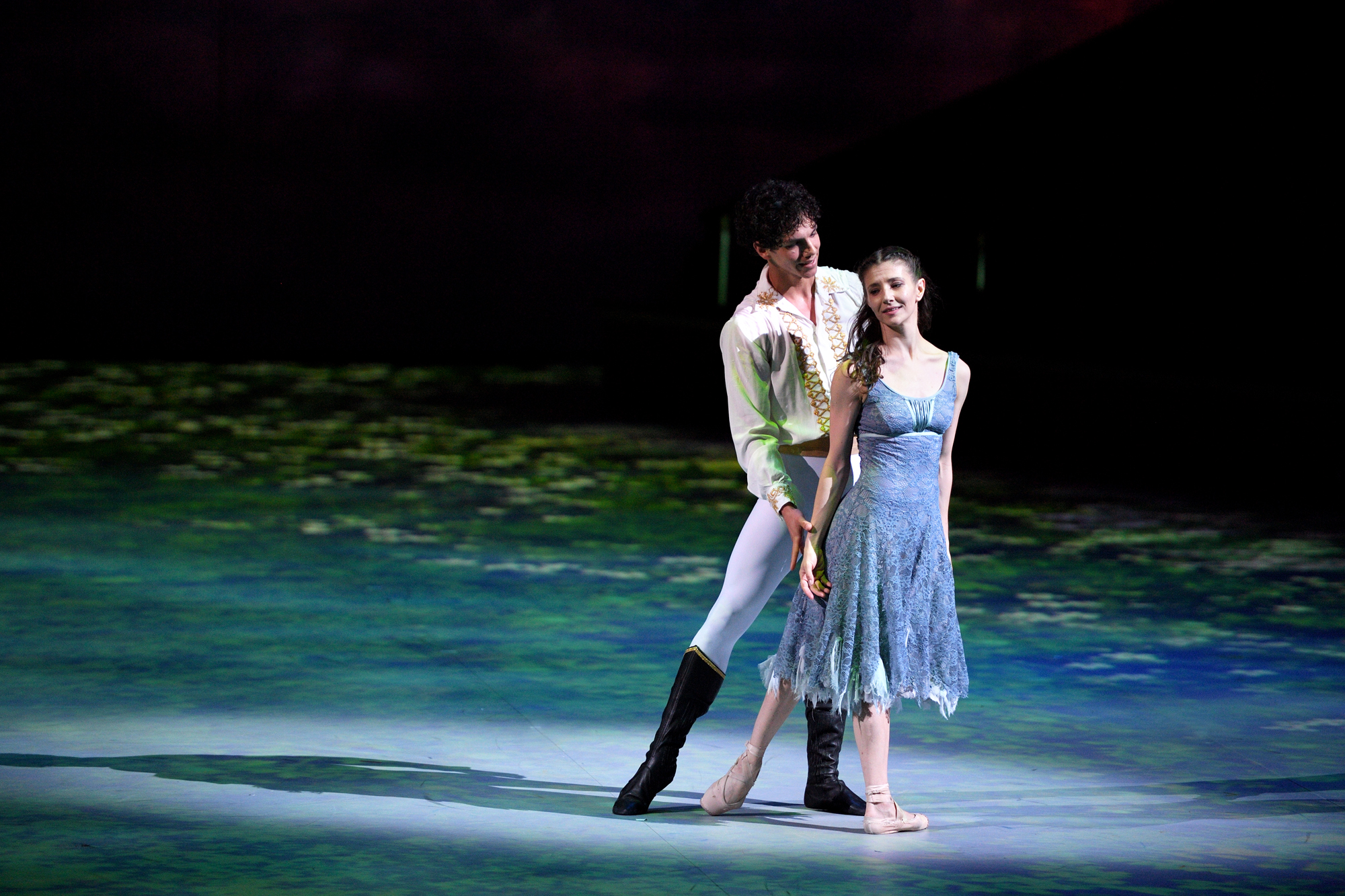
Last Friday Julia and Rosie attended English National Ballet’s Cinderella in-the-round, specially adapted for the Royal Albert Hall by the award-winning choreographer Christopher Wheeldon.
Although we knew the production would be spectacular, it exceeded our expectations!
On the way into the auditorium we were delighted to meet the dancer James Streeter whom we interviewed last autumn. He was clearly very excited about the production.
JULIA: An evening full of great surprises! ENB’s dancers filled the Royal Albert Hall’s grand arena with such energy that the venue’s atmosphere seemed to be enchanted… full of magic.
ROSIE: For me the magic starts right at the beginning, even before the performance begins: you walk into the auditorium and there’s the huge projection of a blue sky with white clouds, and then you hear birds and see them fly over the “sky” just before Sergei Prokofiev’s score starts. So I felt that nature was going to play a really important role in the production.
JULIA: Well it does, doesn’t it? In the original Wheeldon production the stage is dominated by the tree created by Julian Crouch, which apparently had to be “pruned” (as Graham Watts appropriately put it) when Dutch National Ballet brought it to the Coliseum four years ago. Although the actual tree isn’t there in the Albert Hall, it’s still present in the projections onto drapes gathered in the shape of a tree.
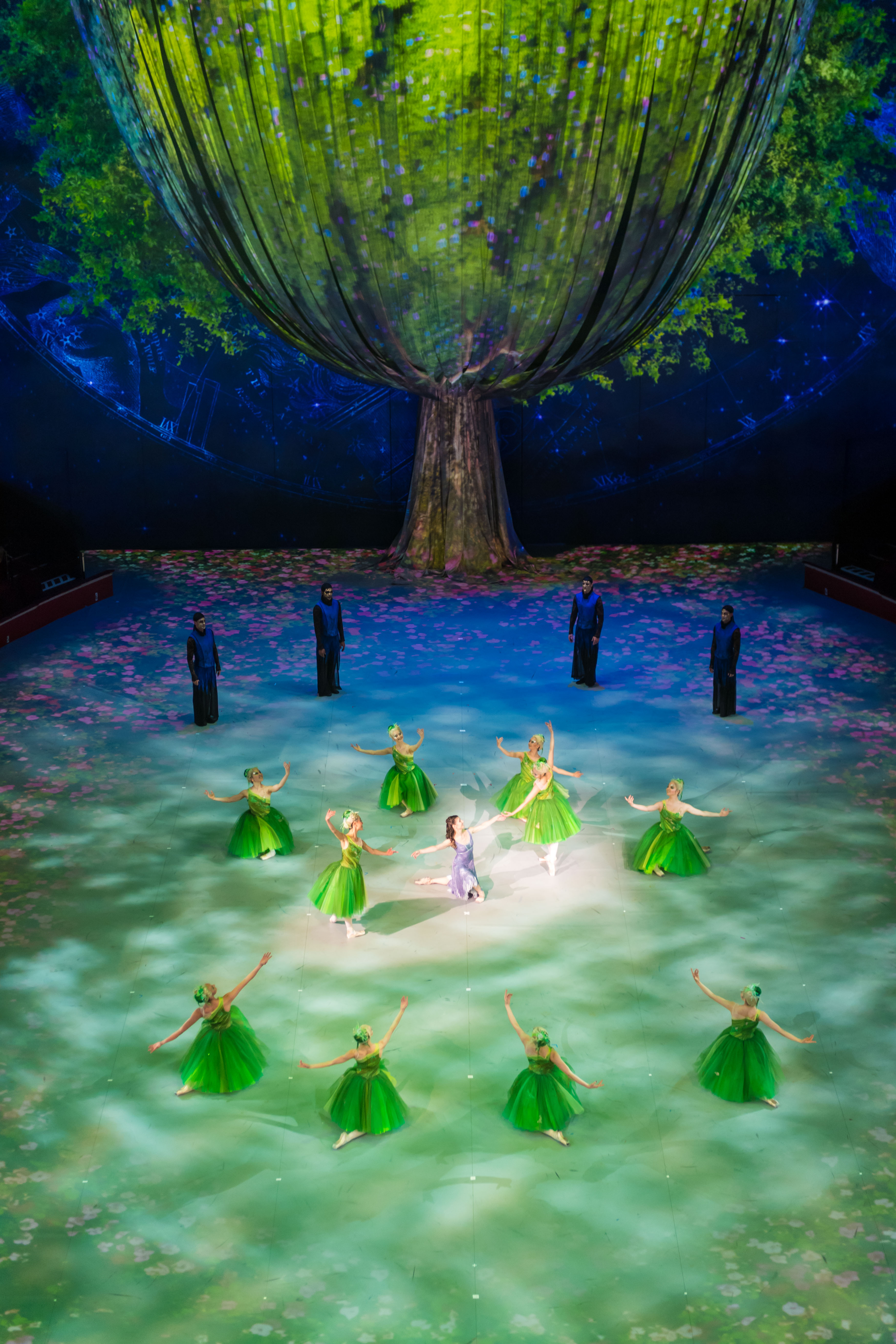
ROSIE: It’s all about illusion, isn’t it? It says in the programme that there are over 370 costumes – and they include outfits for fantastical white birds, tree gnomes, and the Spirits of Lightness, Generosity, Mystery and Fluidity, all connected to the tree, as if it’s some magical life force.
JULIA: The idea of the tree came from the version of the tale by the Brothers Grimm, so written in the Romantic era. In fact they seem to have produced two adaptations of the story, seven years apart (1812, 1819) but both featuring the tree.
ROSIE: So there’s no Fairy Godmother and pumpkin, as in the Charles Perrault version (1697).
ROSIE: And Cinderella is held aloft “in” the coach by one of the dancers and holding billowing silk fabric above her head, almost as if she’s flying – she really is being transported! I find this kind of theatre really imaginative, and I love the way that you can see detail because there’s no orchestra pit separating the audience from the performers. You really liked the Fates, didn’t you?
JULIA: Yes, I found them very striking… I often caught myself directing attention to their moves on stage. In my opinion they were telling the audience the fairy tale from Cinderella’s perspective. Because they are so integral to the production: they are always present; they don’t suddenly appear from nowhere in terms of the narrative…
ROSIE: No they don’t, but they do often move in a soft, almost stealthy way, at times performing low level circular and undulating movements in their dark clothes, so that they seem to emerge organically from Cinderella’s surroundings. Sometimes, because of the way they were positioned around the space, I connected them to the idea of representing the four compass points, so that Cinderella is protected from every direction. I’m sure that being performed in the round encouraged this notion.
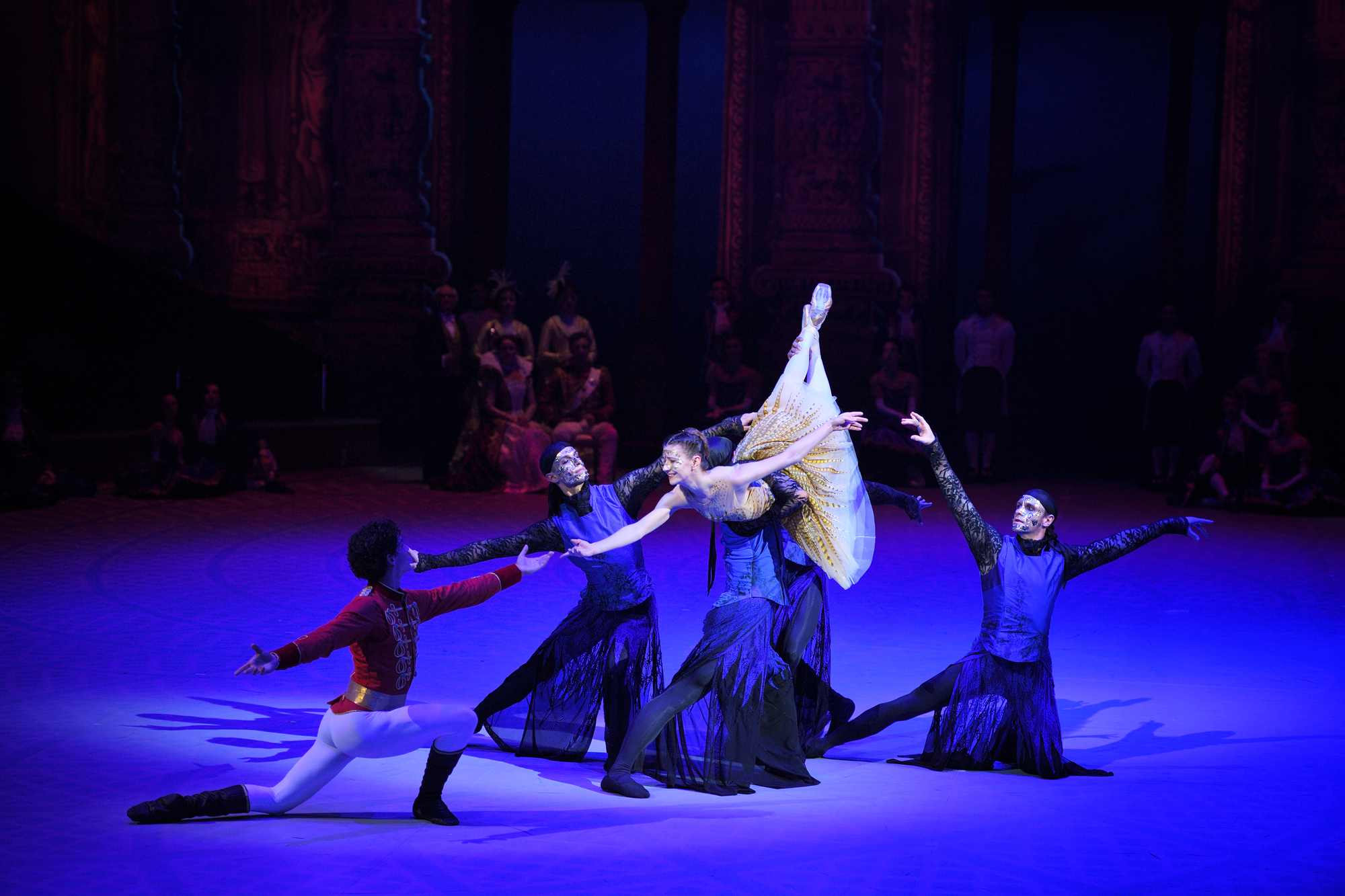
JULIA: Their movement was such a contrast to the corps de ballet who moved with such overt energy. They really made me sit up in my seat with their constant shift of imaginative patterns. But they also contributed to the narrative in that they framed Cinderella’s entrance to the ball, for example, and then with their angular staccato clockwork movements as the scene built up to Cinderella’s exit.
ROSIE: Of course the energy is enhanced by the large number of dancers – 48 corps de ballet dancers in the ballroom scene, I believe – and by fact that, as always, the ENB corps are so well rehearsed. The cohesion seemed even more important than usual in the round – somehow it’s more exposing. One of the things I liked so much about our Cinderella, Erina Takahashi, is that she has a very distinctive quality of serene stillness that I find draws me in when she performs. And in this ballet with all its wonderful buoyant energy, it seemed important to have a still centre to give it a contrasting focus.
JULIA: On another topic, I love theatre that moves seamlessly from one environment to another, like the columns that are drawn out to represent the palace and the kitchen table that glides round the performance area.
ROSIE: The projections on the floor (designed by Daniel Brodie) like the rain, the dappled light beneath the tree, the decorative marble floor of the ballroom, the clockwork wheels. These all enhance the atmosphere of each scene. I almost fell off my seat when the orchestra was lit up during the ball scene; up to that moment it had been hidden. It really intensified the illusion of being present in a beautiful grand ballroom. And the dancers entering and exiting through the auditorium makes me feel invited into Cinderella’s world.
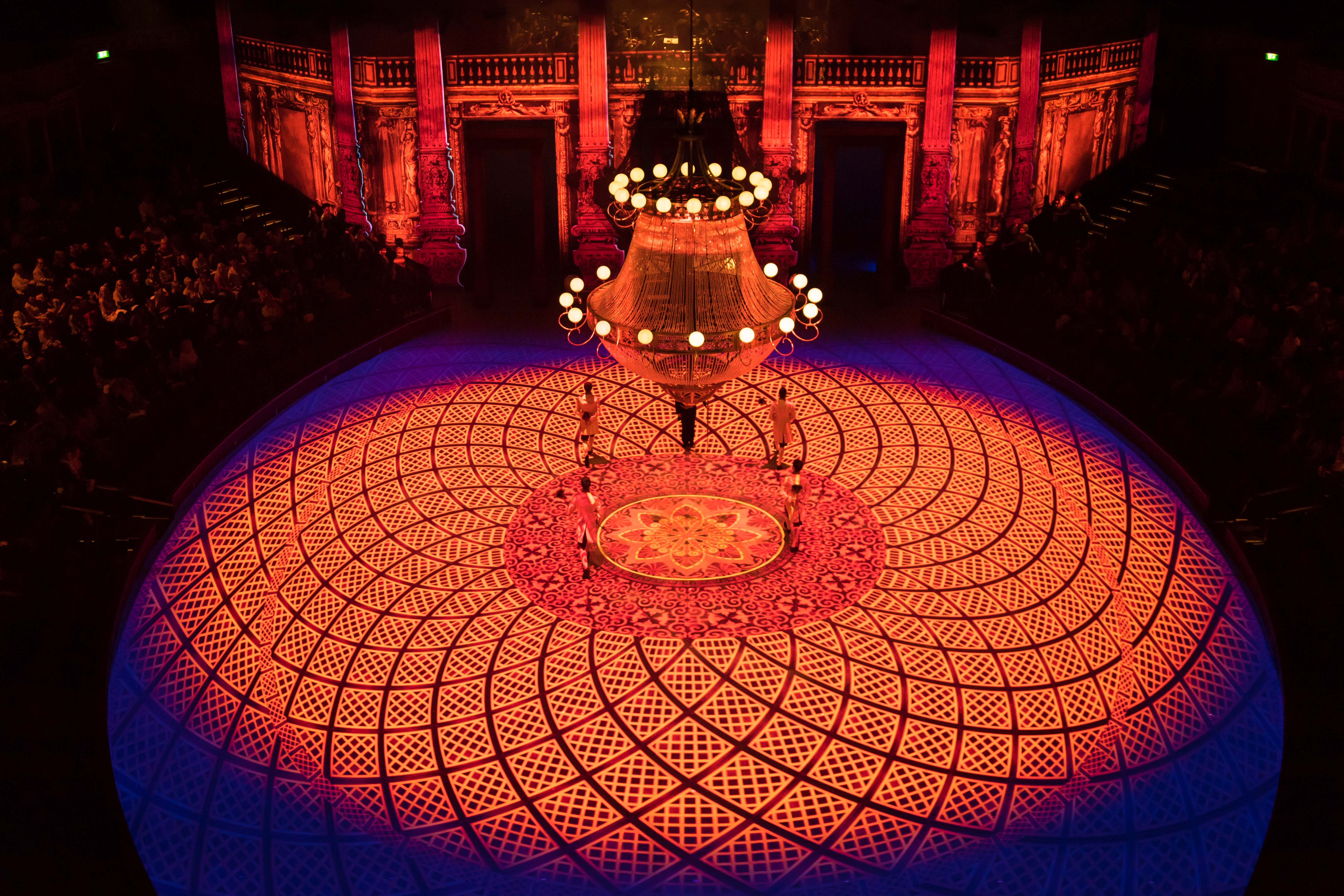
JULIA: Yes, the orchestra was hidden behind the projections. Those projections were really vital to my appreciation of the ballet; for me they contribute to the darkness that Emma Byrne mentions in her review: “[a] story full of dark frivolity and fantasy, high on romance yet with a strong original feel”. Indeed, there is an element of dark fantasy to the story, and this, for me, combined with the dreamy, mystical set and costumes transform the characters and Cinderella into other-worldly beings. Reminded my of a Tim Burton film…
ROSIE: I agree with Emma Byrne the idea of darkness as far as the dark colour palette is concerned (Cinderella really stands out in her light-coloured costumes), but I was relieved that not all of the gruesome details of the Grimm versions were included. The ones that make me feel queasy are the Stepsisters cutting off parts of their feet (which consequently bleed profusely) to try and force them into the shoe, and then at the wedding the birds pecking the Sisters’ eyes out for their wickedness.
JULIA: Stepmother Hortensia does try to hammer their feet into the shoe, though …

ROSIE: Yes, with distinct glee as well as determination, if I remember rightly. But it seemed to me to be comedic, or at least satirical, rather than truly grisly. There was a lot of light-hearted comedy, I thought, and Sarah Kundi as Stepmother Hortensia looked like she was having outrageous fun “momanaging” her daughters and getting deliciously drunk at the ball.
JULIA: : I think the production reflects ENB’s culture as a company – a sense of togetherness, team work and effort is repeatedly expressed on stage. This reminded me of our conversation with ENB’s first soloist James Streeter when he said that “in the culture of ENB, the notion of a minor role does not in fact exist”; all characters are equally important in setting the scene and atmosphere in their productions.
ROSIE: There are more Cinderellas coming up. I’m looking forward to revisiting the topic later in the year with a Now & Then post. Watch this space!!!
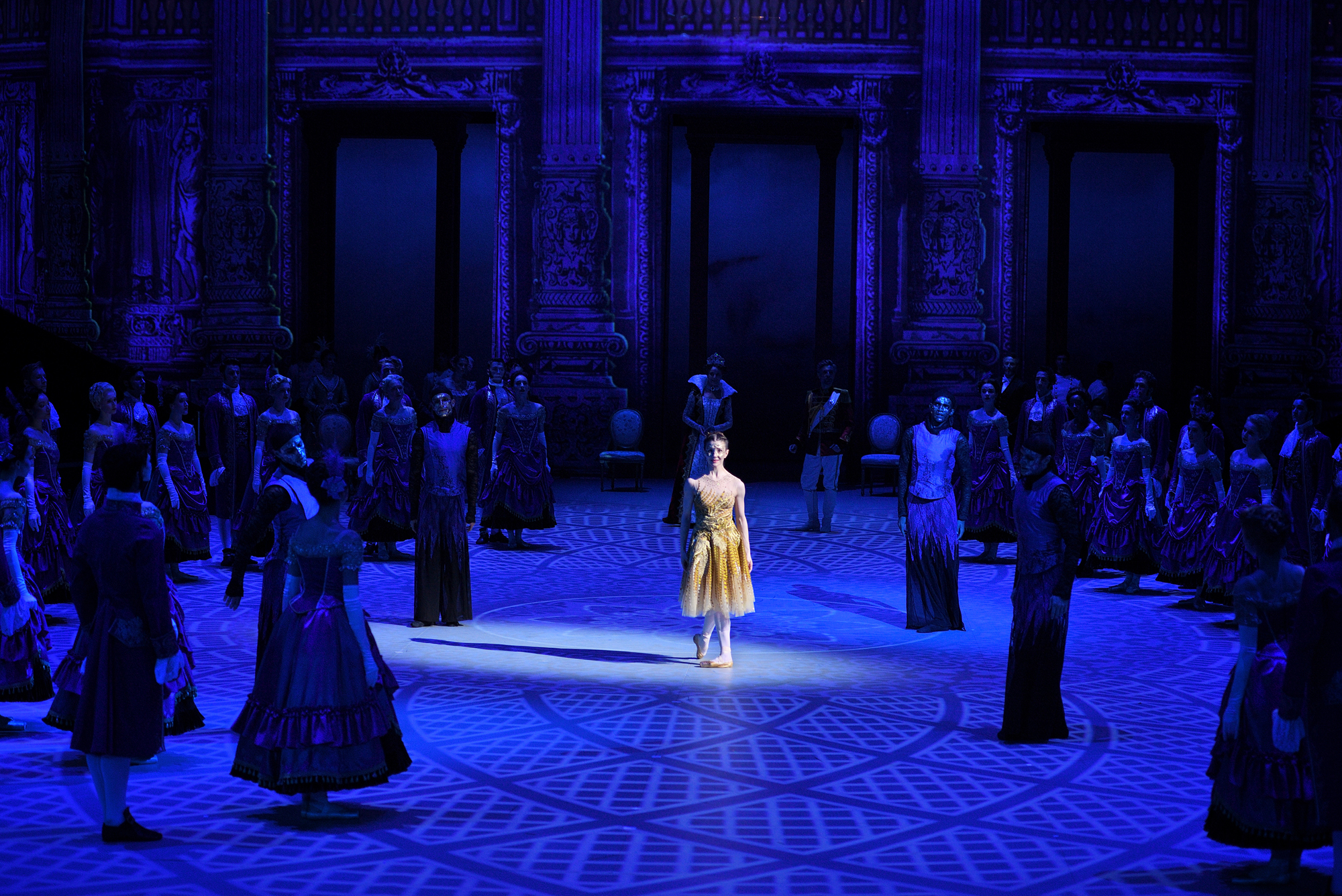
© British Ballet Now & Then
References
Emma Byrne. “Cinderella Review: English National Ballet goes Grimm with a story full of dancer fantasy”. Evening Standard, 7 June 2019, http://www.standard.co.uk/go/london/arts/english-national-ballet-cinderella-review-royal-albert-hall-a4161961.html. Accessed 12 June 2019.
Watts, Graham. “English National Ballet – Cinderella – London”. DanceTabs, 6 June 2019, https://dancetabs.com/2019/06/english-national-ballet-cinderella-london/. Accessed 12 June 2019.